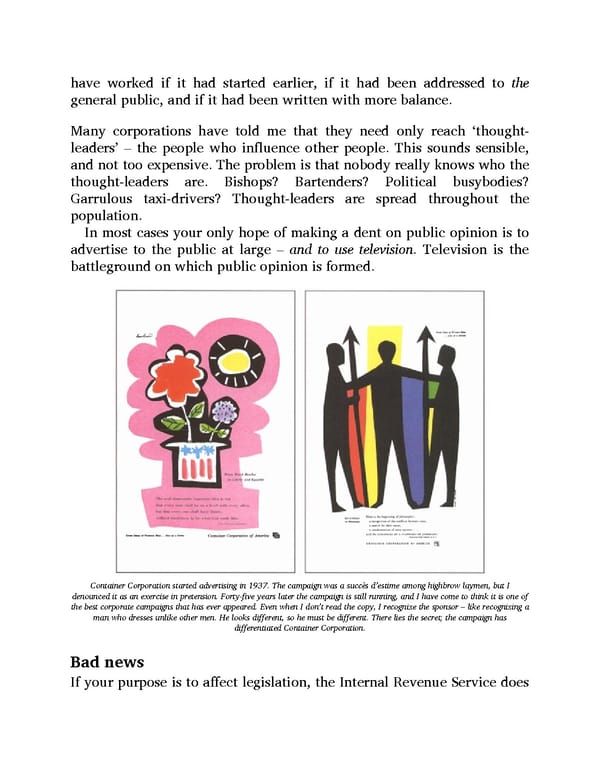have worked if it had started earlier, if it had been addressed to the general public, and if it had been written with more balance. Many corporations have told me that they need only reach ‘thought- leaders’ – the people who influence other people. This sounds sensible, and not too expensive. The problem is that nobody really knows who the thought-leaders are. Bishops? Bartenders? Political busybodies? Garrulous taxi-drivers? Thought-leaders are spread throughout the population. In most cases your only hope of making a dent on public opinion is to advertise to the public at large – and to use television. Television is the battleground on which public opinion is formed. Container Corporation started advertising in 1937. The campaign was a succès d’estime among highbrow laymen, but I denounced it as an exercise in pretension. Forty-five years later the campaign is still running, and I have come to think it is one of the best corporate campaigns that has ever appeared. Even when I don’t read the copy, I recognize the sponsor – like recognizing a man who dresses unlike other men. He looks different, so he must be different. There lies the secret; the campaign has differentiated Container Corporation. Bad news If your purpose is to affect legislation, the Internal Revenue Service does
 Ogilvy on Advertising Page 183 Page 185
Ogilvy on Advertising Page 183 Page 185